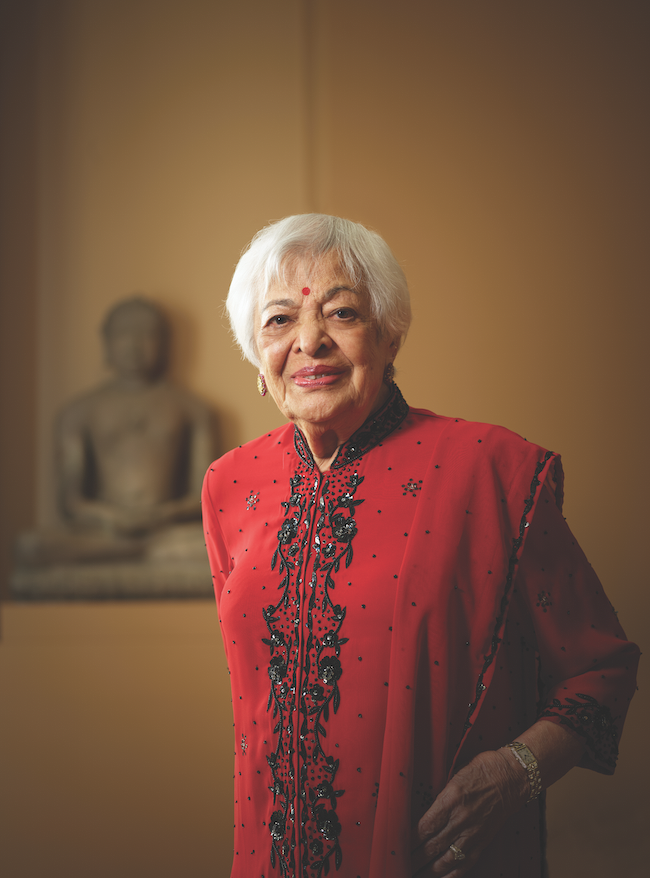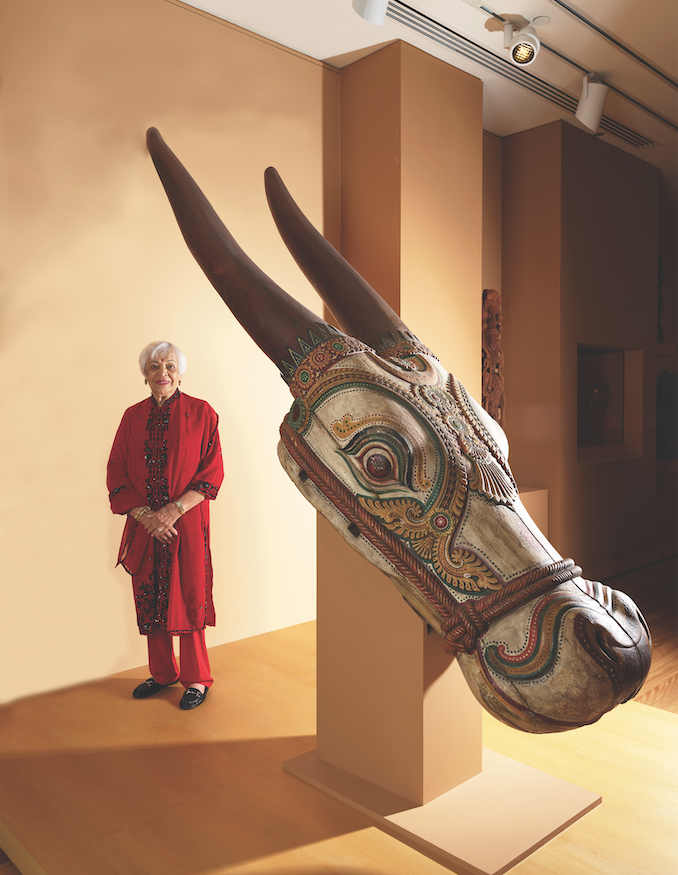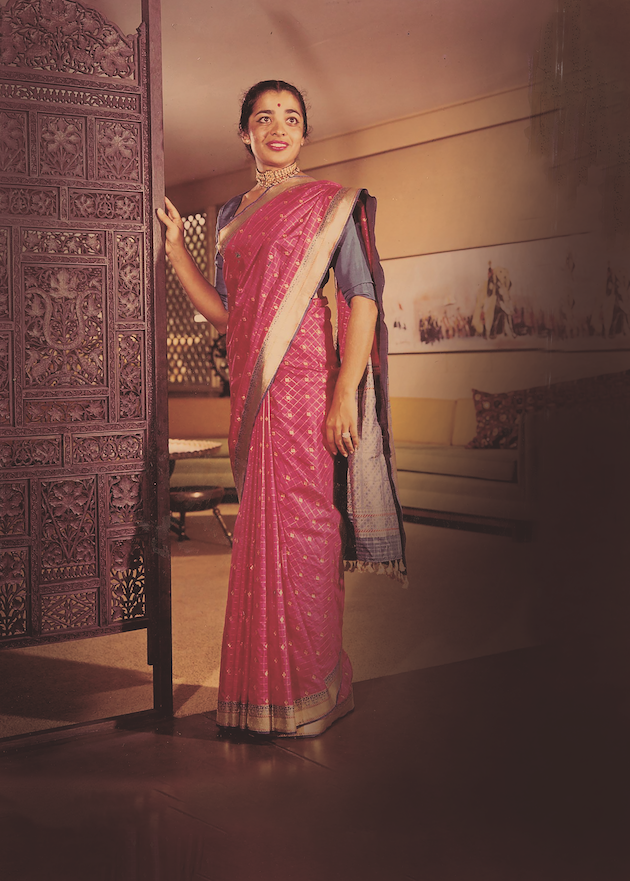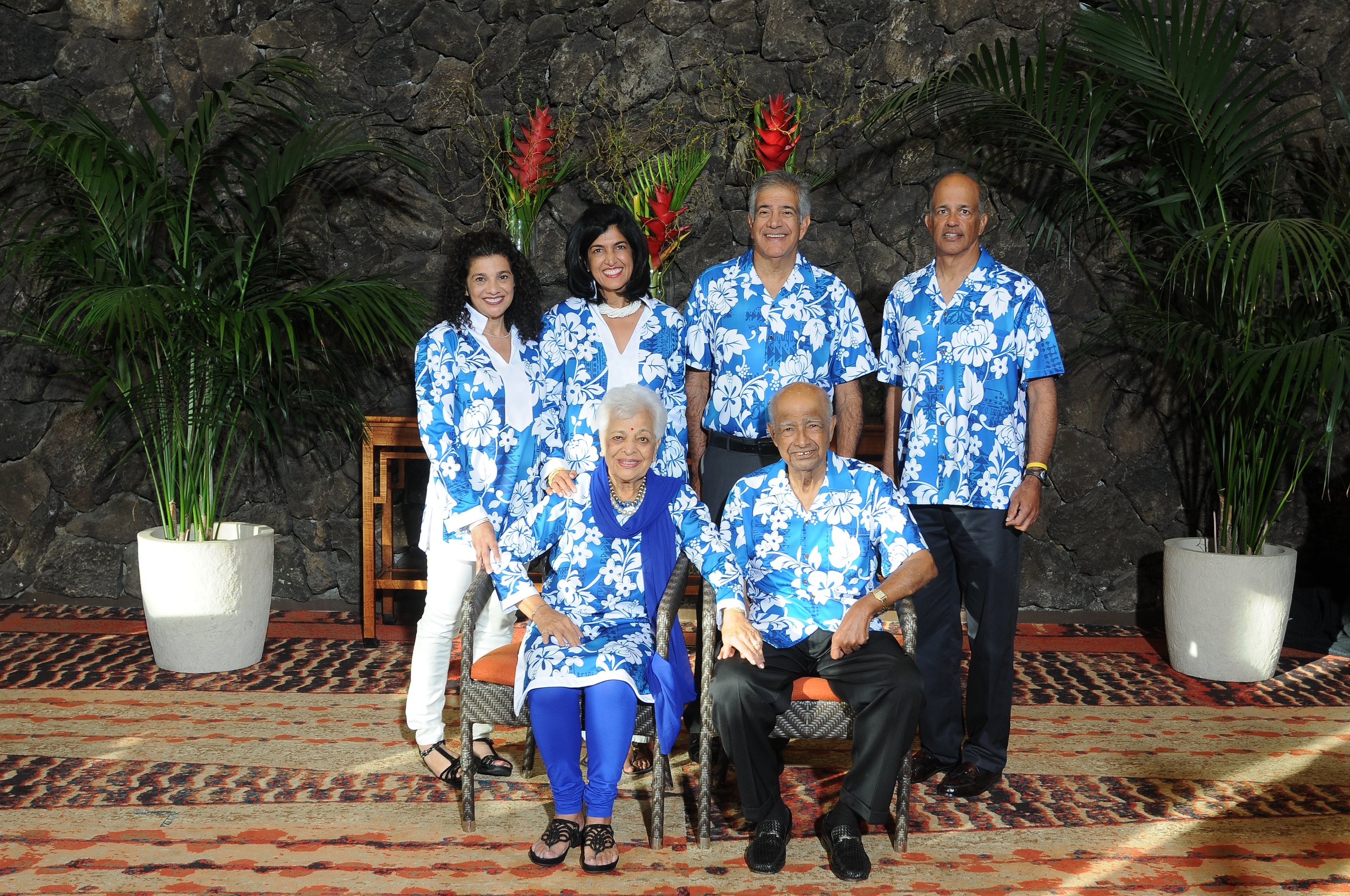Full Circle








text KARYL GARLAND //photographer MARK ARBEIT markarbeit.com IVAN WENTLAND photographer's assistant
hair + makeup TAMIKO HOBIN beautybytamiko.com
shot on location HONOLULU MUSEUM OF ART honolulumuseum.org
An afternoon with Indru Watumull is one filled with priceless personal reflections, wisdom and wit. She embraces a sense of levity and adds dots of humor all of which echo of devotion to family, community and culture. As she speaks of her beloved husband, Gulab, and their children, grandchildren, and great-grandchildren, the significance of a Watumull legacy is mirrored by a cherishment of Hawai‘i.
Indru has been defined by her prominence and generosity . . . her philanthropy and altruism. Indeed, kindness and compassion have been the driving forces for the support given to events, organizations and foundations brought under her wing.
As such, Indru was an early trustee for the University of Hawai‘i Foundation, on the board of the Honolulu Symphony including the esteemed Board of Governors, and a board member with both Hawaii Theatre and Diamond Head Theatre. “I was the first Indian Junior League member in the islands,” and she led the way in raising funds for the American Cancer Society’s Hawaii Pacific Division to create their Nu‘uanu headquarters and the Clarence T. C. Ching Hope Lodge. However, it was in 1953 that a newly married and new-to-the-islands Indru, then 20, settled into a life in the middle of the Pacific Ocean. Eventually, she became a volunteer at the Honolulu Academy of Arts (now the Honolulu Museum of Art or HoMA). “I was a docent. I loved my work at the museum.” And, before long, she was invited to serve on the board by HoMA’s then Chairman Henry B. Clark.
Being an active member of the board, Indru came to wonder, “What about India’s representation here?” So, in May of 1988, she organized a festival celebrating Indian music, dance, and deliciousness that attracted over 3,000 guests. Today, HoMA highlights the Jhamandas Watumull Gallery of Indian Art established by Indru and Gulab, in honor of Gulab’s father. In 2018, the HoMA gift shop was dedicated to the couple in recognition of their collective vision and support. Among their personal contributions to the Indian Art gallery are a gold, bejeweled, ornamental belt (in celebration of their 50th anniversary) and a gem-adorned armband (in honor of their 60th).
Indru also became involved with Makiki’s Contemporary Museum of Art (the Spalding House). In a story from the February 1989 issue of RSVP magazine, she recounts the commissioning, creating and gifting of a door crafted by artist Tony Berlant entitled “Baba’s Door.” In addition, a 19th century, carved teak set of doors from southern India was gifted to HoMA in 1985 on the occasion of Jhamandas’s (or Baba’s) 100th birthday. Indru shares, “‘Baba’ means ‘grandfather’ in our language, which is Sindhi. Everybody who knew him called him ‘Baba’.”
Maintaining what son Vik calls her “fearless” commitment to reaching out to the community raising funds for significant projects, he recalls her saying, “It doesn’t hurt to ask. And if they say no, they will have to say it to me.” Vik continues, though, noting that her successes, especially with HoMA, were also possible because she was championed by Gulab.
Indru states, “What was wonderful about my husband is that he supported me and my passion for the museum.”
Daughter Jojo adds, “She adored visiting museums. But our father would often have to find a chair to sit on because going to the museum with my mother could take hours. He would go to make her happy.”
Indru and Gulab also played tennis. They first met when she was 13 at courts in India’s city of Hyderabad, Sindh. Years passed, and Gulab moved to Hawai‘i to join the Watumull retail business, established in 1914, then to be called by his father to return to India to find a bride. Within the first two weeks, he had reconnected with Indru.
He recognized her saying, “You’re the girl from the tennis club,” Jojo shares. “Dad asked her to dance at a New Year’s Eve celebration; however, Mom was not allowed to dance with people she did not know well.”
“But I did end up dancing with him because he insisted, and I did not want to create a scene,” Indru concludes.
“My family was ultra conservative. So, I had led a very sheltered life. Even when we were engaged and Gulab would come to pick me up to take me out, my sister came along.”
They married in Bombay in April of 1953, four months after their re-meeting, with a honeymoon to follow in Kashmir. Instead of a traditional formal dowry, the personal endowments that Indru possessed included her fluency in both English and her native dialect and her being the first female in her family to graduate from college. Indru states, “That was what my father wanted — education for us.” Her father, Gobindram Mukhi, was a notable businessman and leading legislator in Hyderabad, Sindh, responsible for the creation of the Mukhi House (now a museum thanks, in part, to Indru’s efforts).
The newlyweds would move together to Hawai‘i — the first time Indru would leave India and her first time on a plane. Although under a tragic curtain with the loss of Gulab’s eldest brother, Rama, she slid into matters of the household while her husband expanded the Watumull presence. Indru shares, “It was difficult to adjust to the American way of life with very little household help and a few children soon after.”
However, son JD, recollects, “My mom, after moving from India, adapted to a new country and culture with ease. I also am grateful to both of my parents, and my grandfather initially, for choosing Hawai‘i as a place in which to live and where we would be born and raised.”
When speaking about her children — JD, Chitra, Vik and Jojo — she shares that formal Indian names are based in astrology. According to custom, “We sent the time of their births by telegram, and initials of their first names were determined by the stars. I am so very proud of all of them because they always take great care with everything and everyone.”
Indru’s name translates to “God of the Heavens.” When she was growing up, her family often had unexpected yet fully welcomed visitors at mealtimes. Her father would say, “Just add some water to the dahl. Only the lucky people have guests.”
Daughter Chitra, remembers, “My brightest memories are when our moth- er threw parties at our home in Papu Circle. She was truly an amazing hostess. She would cook ahead of time — always delightful Indian food, maybe a dozen dishes — and set beautiful tables for guests with handwritten place cards. Then she would head upstairs, take ten minutes, and come down to greet her guests looking stunning in glorious Indian attire.”
Indru offers, “It really is easy to shift from what’s missing to what we still have. The loss of my husband was very major. But then, if you look at it the other way, Gulab wasn’t happy because he had always been an active person and a superb tennis player and businessman who was no longer as he once was.”
When asked for advice about how to live a life of peace and joy, Indru suggests, “Be grateful. After all, we still have these blue skies and rainbows and people willing to help each other . . . and, of course, a glorious full moon. A full moon on a clear Hawaiian night is the best. I would not live anywhere else in the world.”
